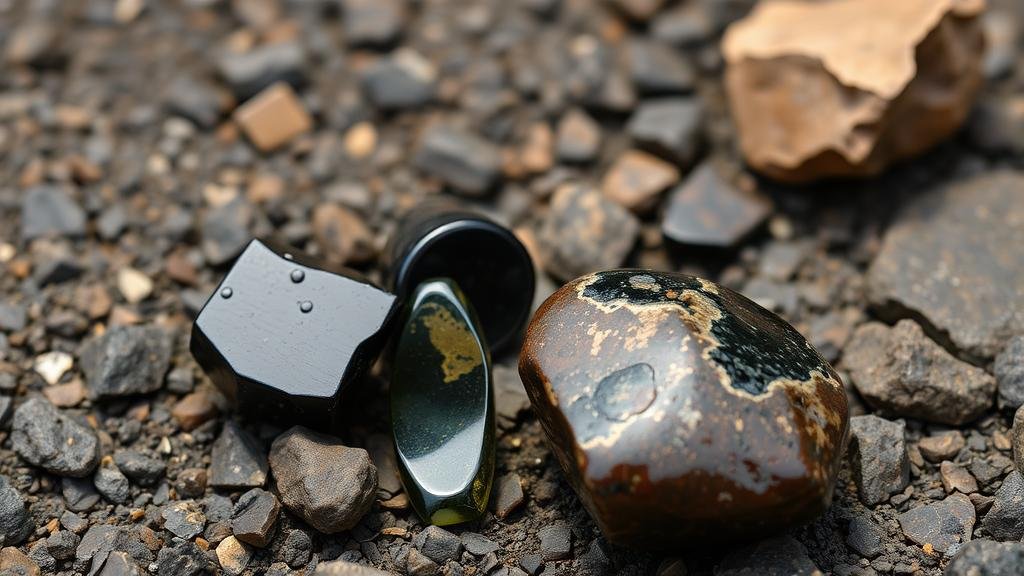How Native Americans Mined Obsidian and Precious Stones
How Native Americans Mined Obsidian and Precious Stones
Native Americans have a rich history that includes traditional practices of mining and using natural resources, particularly obsidian and precious stones. These materials played a significant role in their cultures, economies, and trade networks. Understanding their mining techniques offers insight into their resourcefulness and the sophistication of their societies.
The Role of Obsidian in Native American Cultures
Obsidian, a naturally occurring volcanic glass, was highly valued by Native Americans for its sharpness and workability. It was used to create various tools such as knives, arrowheads, and other implements crucial for hunting and daily tasks. Archaeological studies indicate that obsidian tools date back thousands of years, highlighting their long-standing significance.
- Highly sharp edges: Obsidian can be flaked into incredibly sharp blades, which made it ideal for hunting.
- Durability: Unlike other stone materials, obsidian maintains its edge longer, providing a significant advantage for various tasks.
Mining Techniques and Locations
Native Americans employed various techniques to mine obsidian and precious stones, relying heavily on the geography of their environments. Notable sources of obsidian include locations like the western United States, particularly in areas like the Cascade Range and the Great Basin.
The mining process generally involved:
- Surface quarrying: Native Americans often collected obsidian from surface deposits, marking easy access without the need for extensive excavation.
- Flaking workshops: Once collected, the material was transported to designated sites where artisans would craft tools through a process known as flaking.
One exemplary site is the Obsidian Cliff in Yellowstone National Park, which served as a vital source for various tribes including the Shoshone. Here, artisans extracted obsidian from the cliff face and transported it hundreds of miles for use and trade.
Precious Stones and Their Significance
Beyond obsidian, Native Americans also mined precious stones such as turquoise, which were sought after for their beauty and rarity. Turquoise is particularly prominent in the Southwestern United States and has been used for centuries in jewelry and ceremonial items. The Navajo and Zuni tribes, for instance, are renowned for their intricate silver jewelry featuring turquoise stones.
- Cultural importance: Turquoise holds spiritual significance and is often associated with protection and healing.
- Trade value: Precious stones like turquoise were highly traded commodities, contributing to inter-tribal commerce.
Techniques and Tools for Precious Stone Mining
The extraction of precious stones involved specialized techniques tailored to the specific material. Some methods included:
- Surface mining: Similar to obsidian mining, turquoise was often found in surface deposits, making it accessible for collection.
- Simple tools: The use of basic hand tools such as chisels and hammers enabled miners to extract stones from outcrops effectively.
Notably, the exploitation of lapidary skills to shape and polish these stones reflects an impressive level of craftsmanship that has been passed down through generations.
Real-World Applications and Modern Implications
Today, the mining practices of Native Americans have influenced contemporary operations in several ways. Many tribes have begun to reclaim traditional mining methods, combining them with sustainable practices. The incorporation of these methods emphasizes respect for the land and responsible resource management, which are crucial against the backdrop of modern environmental concerns.
Plus, the artistic legacy of using obsidian and precious stones continues in jewelry and crafts, providing economic opportunities for many communities today. By drawing on historical techniques, modern artisans create products that not only celebrate their culture but also contribute to their local economies.
Conclusion
The mining of obsidian and precious stones by Native Americans exemplifies a deep connection to the land and resourcefulness that has persisted through the ages. By understanding these practices, we can appreciate their cultural significance and the ways in which they have shaped both past and present communities.
Actionable takeaways include:
- Explore local Native American heritage sites to learn more about their mining techniques and tools.
- Support artisans and businesses that promote Native American crafts and sustainable practices.
- Educate others about the historical context of Native American resource utilization and its relevance today.



